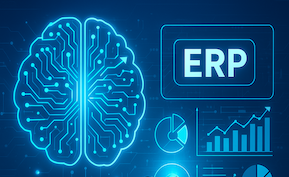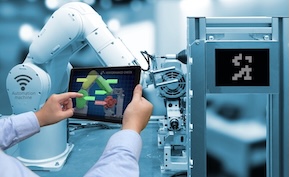Business Intelligence
Edge-to-Cloud Analytics: Bringing Real-Time Insights to the Front Lines of Operations

Edge-to-cloud analytics represents the next leap in real-time business intelligence. By combining the speed of edge computing with the scalability of cloud-native SaaS platforms, enterprises can process data where it’s generated—on-site, in vehicles, or at customer touchpoints—then sync it instantly with cloud dashboards. This architecture delivers real-time, field-to-finance visibility that enables smarter, faster decision-making across every level of the business.
What is edge-to-cloud analytics?
Edge-to-cloud analytics connects local, on-site data processing (“the edge”) with centralized analytics infrastructure in the cloud. Edge devices—such as IoT sensors, mobile apps, or industrial controllers—collect and analyze data in milliseconds, while the cloud provides long-term storage, modeling, and enterprise-wide visibility.
- Edge computing: Processes data locally for instant insights and reduced latency.
- Cloud analytics: Provides deeper contextual analysis, aggregation, and visualization.
- Unified pipeline: Links the two for continuous, bidirectional data flow.
Why real-time matters at the edge
In industries like logistics, manufacturing, energy, and retail, delays of even a few minutes can cost millions. Edge analytics ensures immediate responsiveness while the cloud provides enterprise-scale intelligence.
- Field operations: Detect issues like equipment failures or route delays instantly.
- Finance teams: Access live operational metrics that affect cost and profitability.
- Executives: Get unified dashboards showing both on-the-ground activity and financial outcomes.
The edge-to-cloud architecture explained
- Data generation: IoT sensors, POS systems, or mobile devices collect continuous streams of operational data.
- Edge processing: Local compute nodes filter and analyze data in real time.
- Event streaming: Key insights or anomalies are transmitted to cloud analytics services via event buses like Kafka or AWS IoT Core.
- Cloud analytics: Central systems aggregate, model, and visualize data for global visibility.
- Action feedback loop: Insights trigger alerts or actions back to edge systems for automated response.
Technologies powering edge-to-cloud analytics
- AWS IoT Greengrass: Enables local data processing and machine learning inference on connected devices.
- Microsoft Azure IoT Edge: Brings AI models and data logic closer to operations.
- Google Cloud IoT Core + BigQuery: Collects, stores, and analyzes sensor data at cloud scale.
- Databricks + Delta Live Tables: Streamlines event ingestion and transformation in hybrid environments.
- Snowflake Edge Data Exchange: Synchronizes distributed data sources for unified analysis.
Benefits of the edge-to-cloud approach
- Ultra-low latency: Real-time insights enable faster responses to operational events.
- Data efficiency: Only relevant, processed data moves to the cloud, reducing bandwidth costs.
- Scalability: Cloud analytics can handle enterprise-wide expansion and advanced AI workloads.
- Resilience: Local edge processing ensures uptime even during connectivity disruptions.
- Field-to-finance connection: Real-time operations data automatically feeds into financial and strategic dashboards.
Use cases across industries
- Manufacturing: Monitor equipment health, predict failures, and automatically adjust production schedules.
- Retail: Analyze in-store foot traffic and sales data for dynamic pricing or promotions.
- Transportation & logistics: Track shipments and optimize routes based on live GPS and environmental data.
- Energy: Optimize power generation and distribution with predictive load balancing at the edge.
Challenges and best practices
- Data security: Protect edge devices from breaches through encryption and endpoint management.
- Integration complexity: Unify multiple vendors and protocols into a single data pipeline.
- Governance: Apply consistent data policies across edge and cloud layers.
- Cost optimization: Balance edge compute investments with cloud storage and analytics expenses.
KPIs to track
- Data latency: Average time from data capture to actionable insight.
- Edge processing accuracy: % of correct detections or predictions at the device level.
- Cloud-to-edge sync success rate: Reliability of bidirectional communication.
- Operational uptime: Reduction in downtime due to predictive insights.
- ROI on analytics infrastructure: Cost savings achieved through real-time optimization.
FAQs
What is edge-to-cloud analytics? It’s a hybrid analytics model that processes data at the edge for speed while storing and analyzing it in the cloud for scalability and long-term insights.
Why is edge computing important for real-time analytics? It reduces latency by processing data closer to where it’s generated, enabling faster decisions and actions.
How does edge-to-cloud analytics support finance? It connects live operational metrics to financial systems, providing up-to-date visibility on costs, efficiency, and profitability.
What tools enable edge-to-cloud integration? AWS IoT, Azure IoT Edge, Google Cloud IoT, and Databricks are common platforms for hybrid data processing.
Bottom line
Edge-to-cloud analytics brings the best of both worlds—speed and scale. By bridging real-time operational data at the edge with powerful analytics in the cloud, enterprises gain full visibility from field to finance, enabling proactive management, faster innovation, and measurable business impact.






